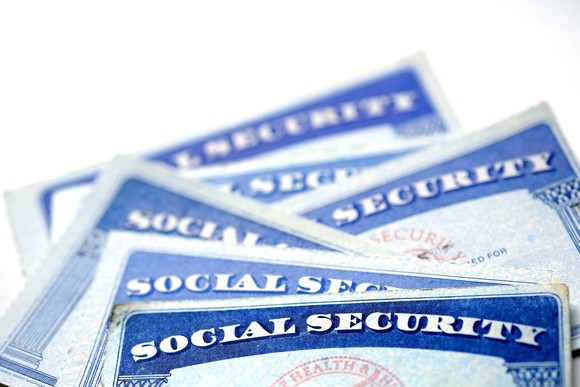For some retired Americans, Social Security is supplemental income, or bonus money they can use on top of a robust nest egg. But not everyone is that fortunate.
The reality is that many retired Americans today do not have any savings. And many who do only have a modest amount, making it so that Social Security constitutes the bulk of their income.

Image source: Getty Images.
That's a problem, though, because the average retired worker on Social Security only receives a little more than $2,000 per month these days. Given how rampant inflation has been over the past few years, for a lot of seniors, that's generally not enough to maintain a comfortable lifestyle.
Now the good news in the context of inflation is that Social Security benefits are eligible for an automatic cost-of-living adjustment, or COLA, each year. COLAs are supposed to help benefits keep up with inflation so that seniors don't fall behind.
The Social Security Administration recently announced that Social Security benefits are getting a 2.8% COLA in 2026. And that's a more generous raise than the 2.5% COLA Social Security recipients got at the start of 2025. Still, the 2026 COLA is shaping up to be a lose-lose situation for retirees, despite it being considerably higher than this year's boost.
The problem with 2026's COLA is twofold
There are two issues with 2026's Social Security COLA.
First, even though a 2.8% raise might seem fairly generous, the reality is that Social Security COLAs have long failed to help seniors maintain their buying power in the face of inflation.
Social Security COLAs are based on year-over-year third-quarter changes to the Consumer Price Index for Urban Wage Earners and Clerical Workers, or CPI-W. But the CPI-W measures the expenses urban and clerical workers face -- not retirees.
Advocates have pushed for a more senior-friendly formula to calculate COLAs. But since 2026's Social Security COLA is based on the CPI-W, there's a good chance it will fall behind inflation as it relates to seniors specifically. And a big reason is that healthcare, which tends to be a big expense for Social Security recipients, commonly rises faster than broad inflation.
The other issue with 2026's Social Security COLA is that an increase in the standard Medicare Part B premium will eat into many seniors' upcoming raise. It's true that not all Social Security recipients are enrolled in Medicare. But for those who are, Part B premiums are paid directly out of their monthly Social Security checks.
It's common for Medicare Part B hikes to erode Social Security COLAs. And it seems like 2026 will fit that pattern for any retiree who's signed up for both Medicare and Social Security.
Take steps to improve your financial picture
If you're a retiree who's been struggling financially, you can't expect 2026's Social Security COLA to do you do all that much good. A better idea is to take a look at your financial situation and see what changes you can make to improve it.
That could mean:
- Downsizing to a smaller home to lower your housing costs
- Moving in with an adult child for a few years to build some savings
- Relocating to a part of the U.S. where living costs are generally cheaper
- Shopping around for a more cost-effective Medicare plan during fall open enrollment
- Going back to work part-time
While it's easy to argue that a 2.8% Social Security COLA is better than the 2.5% raise that arrived in 2025, it's really not a great solution for seniors. The sooner you recognize that, the sooner you can make positive changes that improve your financial outlook for 2026.